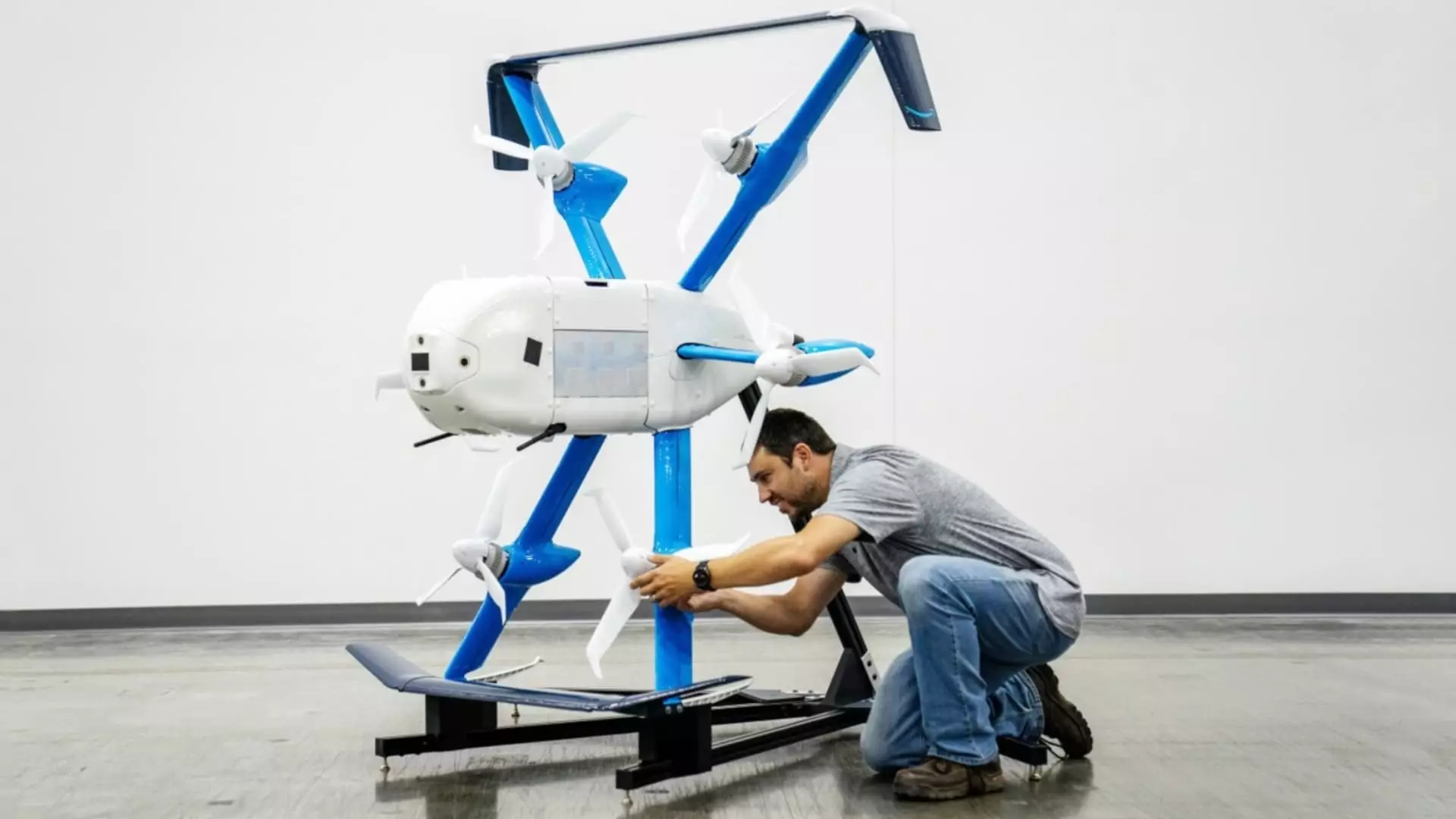Amazon’s recent announcement to revive its Prime Air drone delivery service marks a significant milestone in the realm of logistics and last-mile delivery solutions. This resurgence in College Station, Texas, and Tolleson, Arizona, comes after a meticulous few months, during which the tech giant paused operations to address technical issues. The company identified a critical flaw regarding the altitude sensor on its drones, an oversight that, although never materializing into a safety issue, warranted immediate attention. Such responsible management should be lauded in an age where safety often seems secondary to expediency.
Amazon’s proactive decision to halt deliveries showcases its commitment to ensuring customer safety and operational reliability. As the spokesperson Av Zammit articulated, “Safety underscores everything we do at Prime Air.” This statement not only reinforces the company’s ethos but also sheds light on how seriously it takes potential risks, which are paramount when dealing with autonomous flying machines.
Breaking Ground with the MK30 Drone
The unveiling of the MK30 drone constitutes a critical evolution in Amazon’s operational capabilities. Designed to be quieter and more efficient, it signifies a broader ambition to refine the customer experience. Noise complaints from residents in College Station highlighted the fine balance Amazon must navigate: the juxtaposition between technological advancement and community respect. As it moves forward, Amazon is also planning to shift the drone hub’s location to alleviate noise disturbances, demonstrating a flexible approach toward community relationships while expanding its innovative endeavors.
Furthermore, the MK30’s upgrades, including its ability to fly in light rain, not only enhance delivery efficiency but also portray Amazon’s vision of resilience against various weather conditions. It embodies the company’s goal of achieving faster and more reliable deliveries, all while maintaining minimal environmental impact – a considerable concern for both consumers and regulators alike.
Aims for Global Dominance Amid Challenges
Despite the buzz surrounding drone deliveries, Amazon’s journey has not been without hurdles. The program has faced significant interruptions, including layoffs within the drone division and the shuttering of test sites like the one in Lockeford, California. According to David Carbon, a key figure in Amazon’s drone initiative, the ambitious aim of 500 million packages delivered via drone annually by the decade’s end seems almost insurmountable with the current logistical challenges and regulatory scrutiny.
For a company known for its relentless pursuit of innovation, the slow pace of progress in drone technology can be frustrating. Realistically, expectations about how quickly Amazon could integrate drones into everyday deliveries have often outstripped reality. The technology itself is still far from perfect, and the recent crash incidents during test flights exemplify the risks involved. Transparency about these failures is vital; it serves to remind stakeholders of the development hurdles that often accompany pioneering technology.
Customer Demand and Future Prospects
The demand for drone deliveries is undeniably present. Zammit’s remarks about “unprecedented levels of demand” post-resumption indicate not only consumer curiosity but also a practical desire for faster delivery solutions. The question arises: are we ready for such innovations, or do we risk compromising safety and quality in the rush to adopt the latest technology?
The ambitious outreach to international markets like the U.K. reflects Amazon’s long-term commitment to establishing itself as a leader in drone logistics. However, it stands to reason that this expansion should be accompanied by robust safety measures and reliable technological advancements to avoid repeating past mistakes. The challenges ahead are daunting but not insurmountable.
As Amazon continues to refine its drone delivery system and innovate within this space, it must balance ambition with the responsibility of ensuring community trust and safety. Each delivery via drone must not only be an exercise in efficiency but also a testament to the company’s ability to learn from its past setbacks. The road ahead will undoubtedly be filled with both milestones and obstacles, but if executed correctly, the potential for revolutionizing the delivery landscape remains immense.

